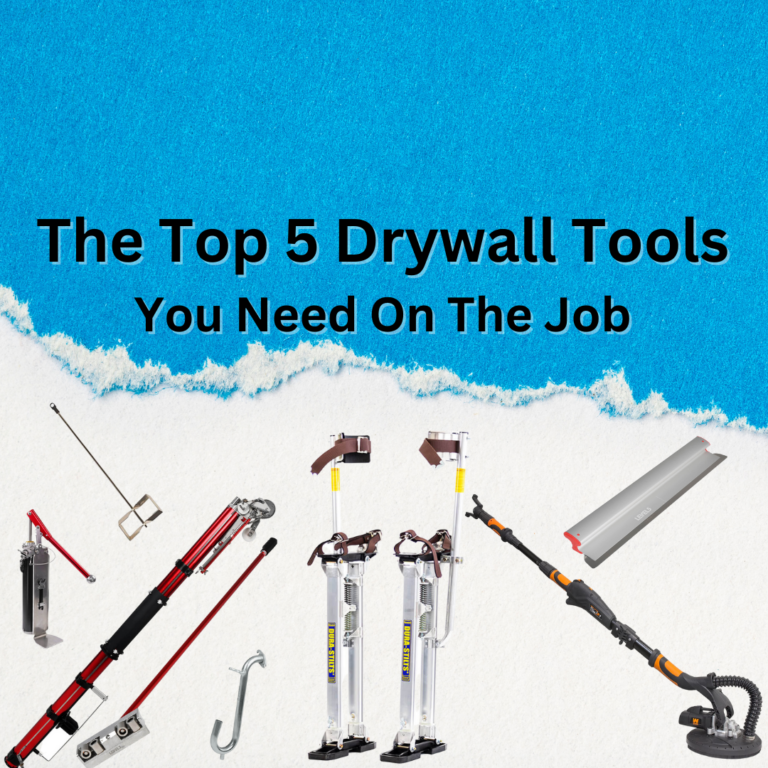Drywall Mud Pan Buying Guide Reviewed: What You Need to Know
When it comes to drywall finishing, having the right tools can make all the difference in achieving a flawless result. As a contractor who has spent years on the job, I’ve learned that one tool that often gets overlooked is the humble mud pan. In this post, we’ll explore the essential factors to consider when buying a drywall mud pan, ensuring you make an informed choice that suits your needs.
Experience: A Contractor’s Tale
Years ago, I was working on a large residential project when I realized the importance of having quality tools, especially a reliable mud pan. My old, flimsy mud pan cracked under pressure during a crucial moment, and it turned what should have been a straightforward job into a frustrating mess. That experience made me realize just how crucial proper equipment is in this trade.
Why a Good Mud Pan Matters
A quality drywall mud pan is not merely an accessory; it’s a fundamental tool for applying joint compound and ensuring smooth finishes. A poorly constructed or heavy pan can lead to fatigue, sloppiness, and inefficient work, which ultimately affects the project’s quality and timeline.
What to Consider When Buying a Drywall Mud Pan
When looking for the perfect mud pan, you’ll want to consider the following factors:
1. Material
Mud pans are typically made from metal or plastic. Here’s a quick comparison:
- Metal Pans: Often made from aluminum, these are durable and provide a smooth surface for applying mud. They can be heavier, but many professionals prefer them for their strength and longevity.
- Plastic Pans: Lightweight and less expensive, plastic mud pans are easy to clean but can warp over time. They’re ideal for light-duty tasks or for DIY projects.
Recommendation: For contractors looking for durability, check out the Level5 Mud Pan, which is made from high-quality aluminum.
2. Size
Mud pans come in various sizes. Common dimensions include:
- 12 inches: Ideal for small jobs or tight areas.
- 14 inches: A versatile choice suitable for most tasks.
- 18 inches: Perfect for larger projects where you need to cover more surface area quickly.
Tip: Choose a size that matches your style of application. For instance, if you often work in tight spaces, opt for a smaller pan.
3. Weight
As someone who has spent hours carrying tools, weight is an essential factor. A heavier mud pan can lead to fatigue over time.
- Lightweight Options: Suitable for DIY projects but may not withstand heavy use.
- Sturdy Options: May be heavier but offer better durability and a solid feel.
Expert Tips for Using a Mud Pan Effectively
1. Proper Technique
Using the right technique can minimize strain. Hold the mud pan at an angle when scooping your joint compound to ensure even coverage and reduce mess.
2. Keep it Clean
After each use, clean your mud pan thoroughly to prevent dried compound from sticking, which can affect future applications. A simple solution is to use a damp cloth immediately after use.
3. Invest in the Right Tools
Complement your mud pan with other quality tools. Consider adding Level5 Taping Knives or Joint Knives to your toolkit. These tools, when used alongside a quality mud pan, will significantly enhance your drywall finishing process.
Additional Features to Look For
1. Design Elements
Look for mud pans with a smooth edge that allows for better control when applying mud. Some pans even have ergonomic designs for a better grip, reducing strain during long projects.
2. Durability
Ensure your mud pan is built to last. A decent warranty often signals good durability.
3. Price Point
While you want to invest in quality, don’t overspend on features you won’t use. Balance quality with price.
4. Reputation and Reviews
Always check user reviews and testimonials. A brand like Level5, known for its excellent drywall tools, has a solid reputation that can help ensure you make a good purchase.
Practical Applications: When to Use Which Type
Understanding the key functions of different mud pans can enhance your work. Here are some scenarios:
- Small Repairs: A 12-inch plastic pan can suffice for minor fixes.
- Standard Jobs: The 14-inch aluminum mud pan serves well for most applications, combining durability and usability.
- Large Projects: For extensive applications, an 18-inch pan will save time and effort.
You can also explore The Best Drywall Taping Techniques to understand how different tools work together.
Conclusion: Making the Right Choice
Selecting a drywall mud pan is more than just picking a tool; it’s about ensuring you have the right equipment to achieve a professional finish. Investing time in researching options can save you headaches down the road and help you deliver superior results.
If you’re starting your journey or looking to upgrade your toolkit, consider checking out Level5 Tools for their high-quality products, including the essential mud pan, joint knives, and taping tools.
Are you ready to elevate your drywall finishing game? What features matter the most to you? Explore our posts on How to Repair Drywall Like a Pro and Drywall Skimming Tips for a Flawless Finish for more tips and tools to enhance your workflow!

